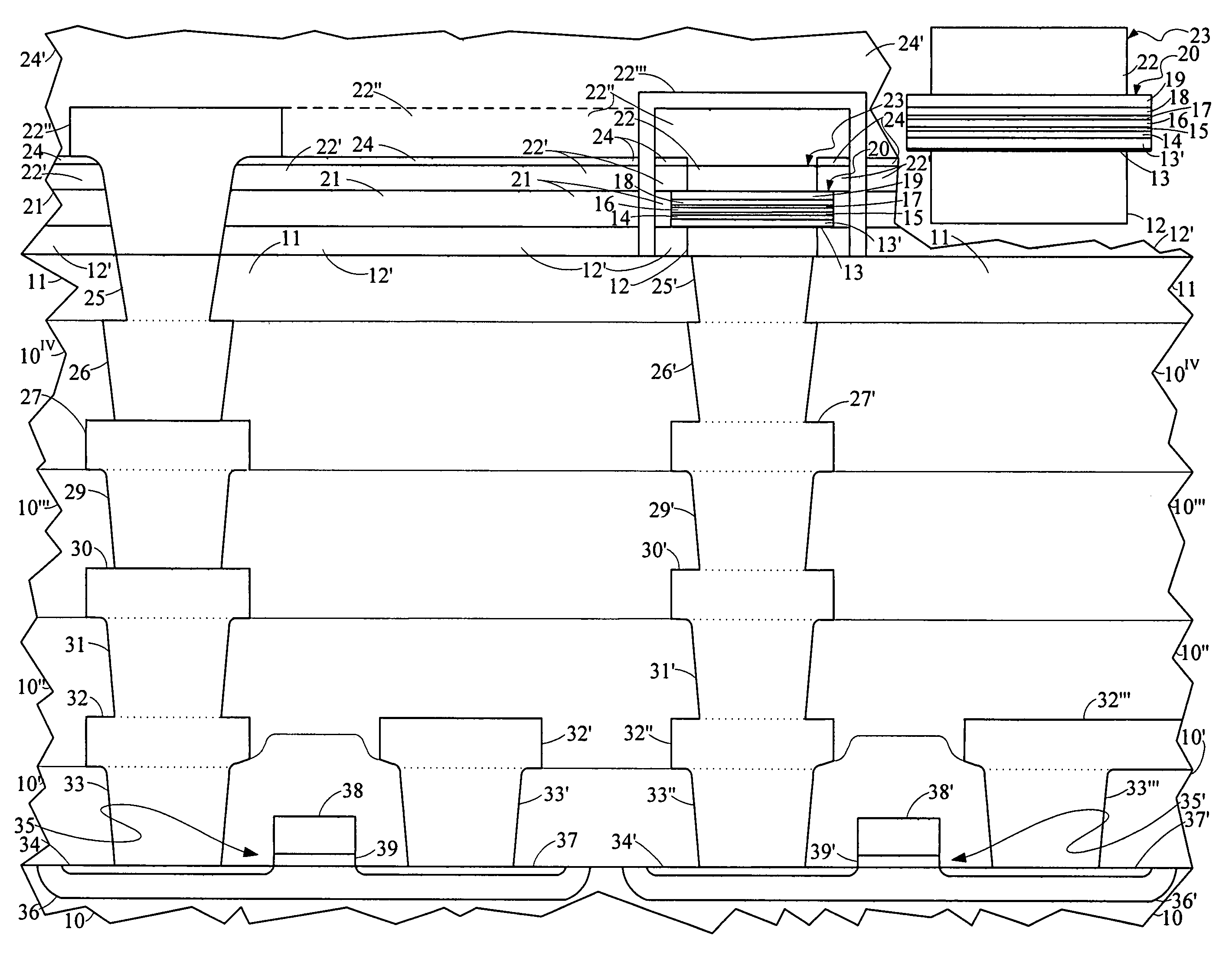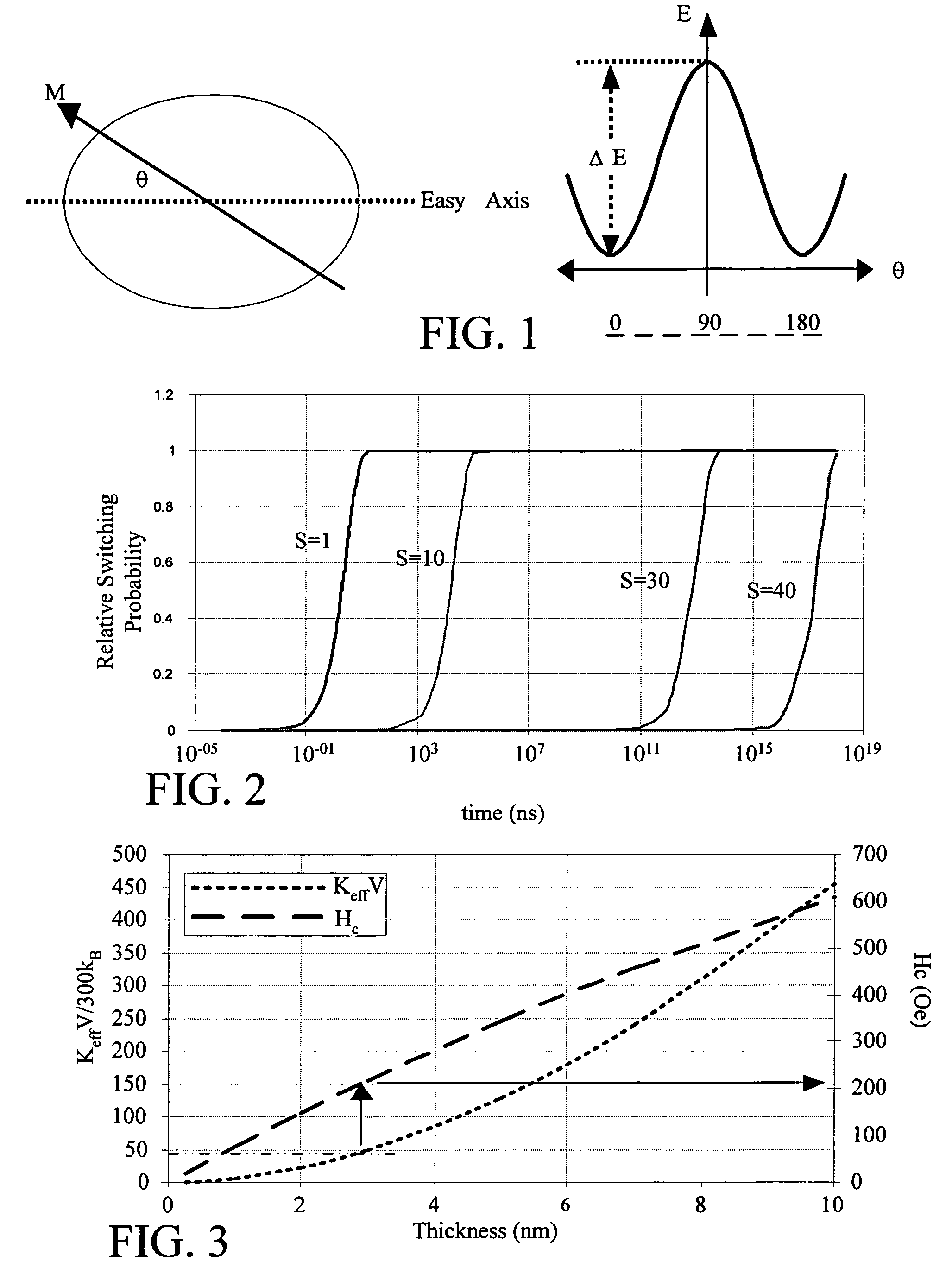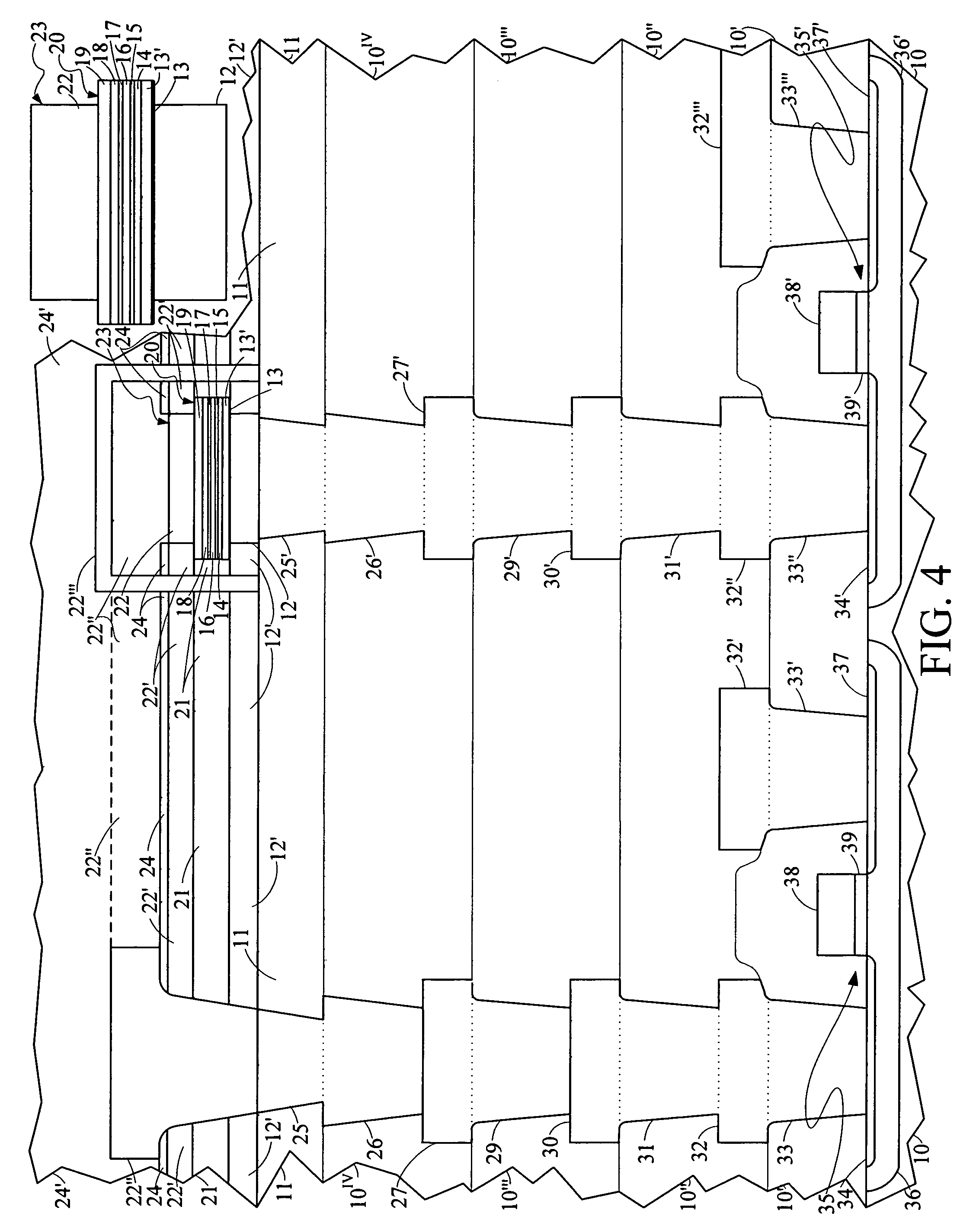Thermomagnetically assisted spin-momentum-transfer switching memory
a technology of magnetic memory and magnetization, applied in the field of ferromagnetically assisted spin-momentum transfer switching memory, can solve the problems of difficult production of high-yielding products, difficult to overcome problems, and complex magnetic environmen
- Summary
- Abstract
- Description
- Claims
- Application Information
AI Technical Summary
Benefits of technology
Problems solved by technology
Method used
Image
Examples
Embodiment Construction
[0032]The electrical current needed for generating a resulting externally applied magnetic field to switch the magnetization direction in the free layer of a magnetoresistive memory device to a reverse position along the layer uniaxial anisotropy axis, or easy axis, can be too large to be practical as described above. This current magnitude can be reduced by supplementing the application of such switching current through additionally providing spin momentum transfer electrical currents in the device and resistive heating electrical currents in or adjacent to the device.
[0033]A monolithic integrated circuit structure example of such a magnetoresistive memory device arrangement suitable for this kind of operation is shown in a fragmentary view thereof in FIG. 4. There is shown a monolithic integrated circuit chip layer diagram of an external supplemented magnetic field switched memory element or cell magnetoresistive structure that is assisted in operation by supplemental spin momentu...
PUM
 Login to View More
Login to View More Abstract
Description
Claims
Application Information
 Login to View More
Login to View More - R&D
- Intellectual Property
- Life Sciences
- Materials
- Tech Scout
- Unparalleled Data Quality
- Higher Quality Content
- 60% Fewer Hallucinations
Browse by: Latest US Patents, China's latest patents, Technical Efficacy Thesaurus, Application Domain, Technology Topic, Popular Technical Reports.
© 2025 PatSnap. All rights reserved.Legal|Privacy policy|Modern Slavery Act Transparency Statement|Sitemap|About US| Contact US: help@patsnap.com



